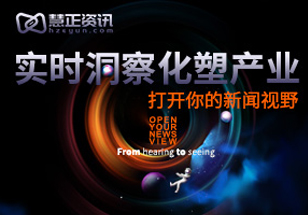COPYRIGHT©广州慧正云科技有限公司 www.hzeyun.com 粤ICP备18136962号 增值电信业务经营许可证:粤B2-20201000
“We’re very proud to have successfully switched over to 100% renewable electricity and give further momentum to the company’s drive to transition all of its sites globally,” says Daniel Campos, director of AkzoNobel’s Decorative Paints Latin America business and a member of the Executive Committee.
To hit the 100% goal, the company installed solar energy systems across its 19 manufacturing sites in the region, including 1,580 panels at the Decorative Paints facility in Recife, Brazil – which supplies more than 30% of its energy needs. An even larger array of 4,640 panels were installed at the Rionegro paints and coatings plant in Colombia — which provides 24% of the site's energy.
The Recife solar installation, developed and operated by EDP Renewables, produces 1,372 MWh of green power per year.
“The Recife solar panel project is yet another example of AkzoNobel’s commitment to achieving its ambition of operating on 100% renewable electricity by 2030,” said André Capareli, AkzoNobel regional category manager, during the commissioning of the project.
“As the first company in our industry to commit to science-based targets, sustainability is integrated into everything we do. And we won't stop here. Recife will be the first, but not the only AkzoNobel site in South America to start generating its own electricity. We aim to roll out sustainable solutions gradually at all our sites over the next few years,” Capareli said at the time.
Global Carbon Emission Goals
The Latin America renewable energy program is only part of AkzoNobel’s global sustainability program, which has set a goal of reducing carbon emissions for the whole value chain by 50% by 2030, using a 2018 baseline. This will apply to the company’s own operations, as well as its partners, such as customers and suppliers, the company says. As of the end of 2023, AkzoNobel reported a 38% reduction in carbon emissions from company operations.To reach the carbon emissions goal, the company is seeking to reduce energy consumption in worldwide operations 30% by 2030. As of the end of 2023, a 1% total energy use reduction was registered.
The targets were officially validated by the Science Based Targets initiative (SBTi) in September 2021. As such, AkzoNobel claims to have been the first paints and coatings company to set science-based sustainability targets by announcing carbon reduction targets for the full value chain.
AkzoNobel in 2017 joined the RE100 initiative, a collaborative effort uniting the world's most influential businesses committed to 100% renewable electricity, as developed by non-profit The Climate Group in partnership with CDP (formerly known as the Carbon Disclosure Project).
Broad Sustainability Goals
AkzoNobel has embraced renewable energy as only one part of a broad, quantified, global sustainability program.“As the first paints and coatings company to set science-based sustainability targets, we’re fully focused on fulfilling our ambitions and this latest achievement in Latin America is another important step in the right direction,” said Wijnand Bruinsma, AkzoNobel’s director of sustainability, in a company statement. “We also continue to engage with suppliers and develop sustainable solutions in order to help our customers reduce their own carbon footprint.”
AkzoNobel uses the Sustainable Product Portfolio Assessment (SPPA) framework “to add value for our customers and to deliver economic value to the value chain through a a holistic view of the sustainability characteristics of the entire product portfolio,” the company says. The SPPA framework is based on the World Business Council for Sustainable Development’s (WBCSD) Portfolio Sustainability Assessment, now the leading sustainable portfolio framework tool in the chemical industry.
Water and waste reduction are another set of keystone efforts in the company sustainability universe. A goal of using no more than 250 liters of fresh water consumption per ton of product has been set, primarily targeting the use of water for cooling, which accounted for 74% of all water use in 2023, AkzoNobel reported.
Total fresh water use — including groundwater, surface water and potable water — in 2023 amounted to 7.7 cubic meters per ton of product, down from 9.6 cubic meters per ton of product in 2021, the company reports.
The company uses the Aqueduct water risk atlas developed by the World Resources Institute to assess the level of risk at production locations, an exercise run every three years, the company notes.
Waste reuse and overall reduction are companion goals with water conservation. The total waste generated in 2023 was down to 19.0 kilotons from 19.9 kilotons in 2021, the company reports. Recycling materials is a primary focus of this component of the program.
The company has a goal of achieving 100% circular use of materials in its own operations by 2030. This is “defined by the amount of materials reused by AkzoNobel and third parties (reusable waste and by-products) divided by the total waste and by-products,” the company explains. In 2022 the company achieved circular use of materials for 56% of its obsolete material and waste streams.
Reducing landfill volumes is also key. AkzoNobel reports an 89% reduction in waste to landfill (compared to a 2018 baseline). The efforts are in keeping with the United Nations Sustainable Development Goal on Sustainable Consumption and Production (SDG 12), the company reports.
Overall, the sustainability program has made substantial progress. “We’re well on track to deliver our 2030 target of more than 50% revenue coming from sustainable solutions, having achieved 40% in 2022,” the company reports.
The sustainability characteristics of products and services are assessed using an externally verified Sustainable Product Portfolio Assessment, based on criteria that include these circularity topics: reduced carbon and energy; reduced, reused and renewed material use; less waste; longer lasting performance; and health and well-being.
Community Outreach Through Color
Bringing color to all corners of a customer community is one of the highly popular social outreach programs that AkzoNobel conducts. In Recife, a towering mural recently was painted on the Almirante Barroso building in the Boa Vista District using Tintascoral paint, a leading AkzoNobel brand in Brazil.Similarly, in Buenos Aires, AkzoNobel’s Vení al Color (Let’s Colour) program was rolled out in the Barrio del Abasto area by company brand Alba, with the assistance of the Ministry of Culture of the City of Buenos Aires. Alba donated more than 500 liters of paint to help create five murals by female street artists totaling 1,500 square meters of artworks, completed in 2023.
Globally, AkzoNobel has donated 2.2 million liters of paint under the Let’s Colour program across more than 3,000 projects. The projects have included training for nearly 66,000 people with the help of nearly 18,000 volunteers.






